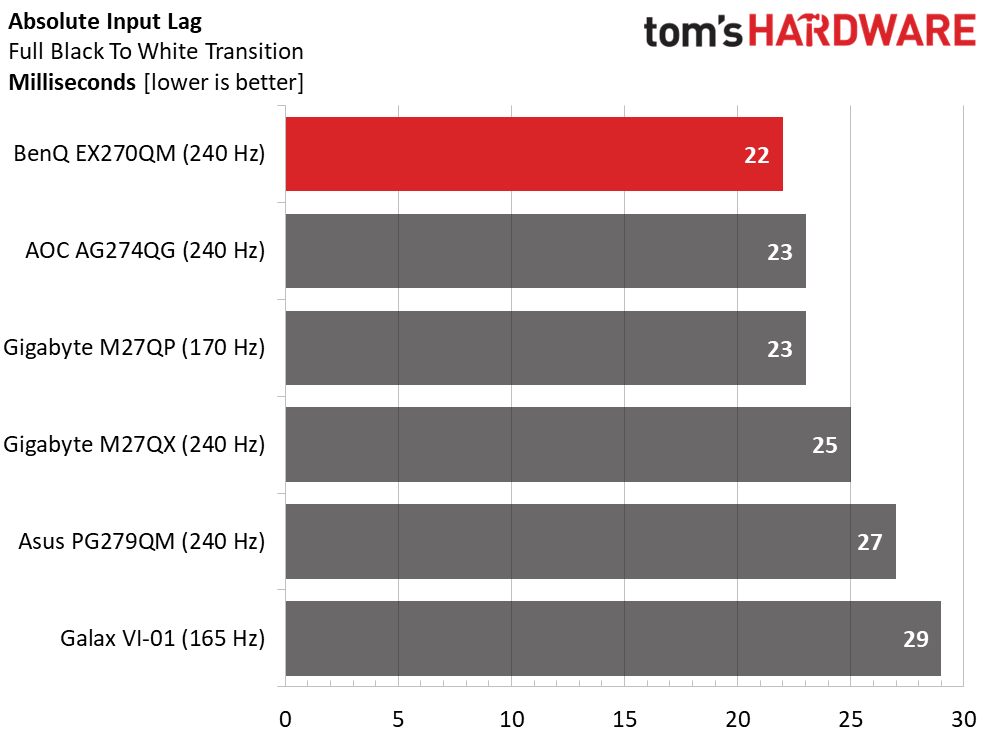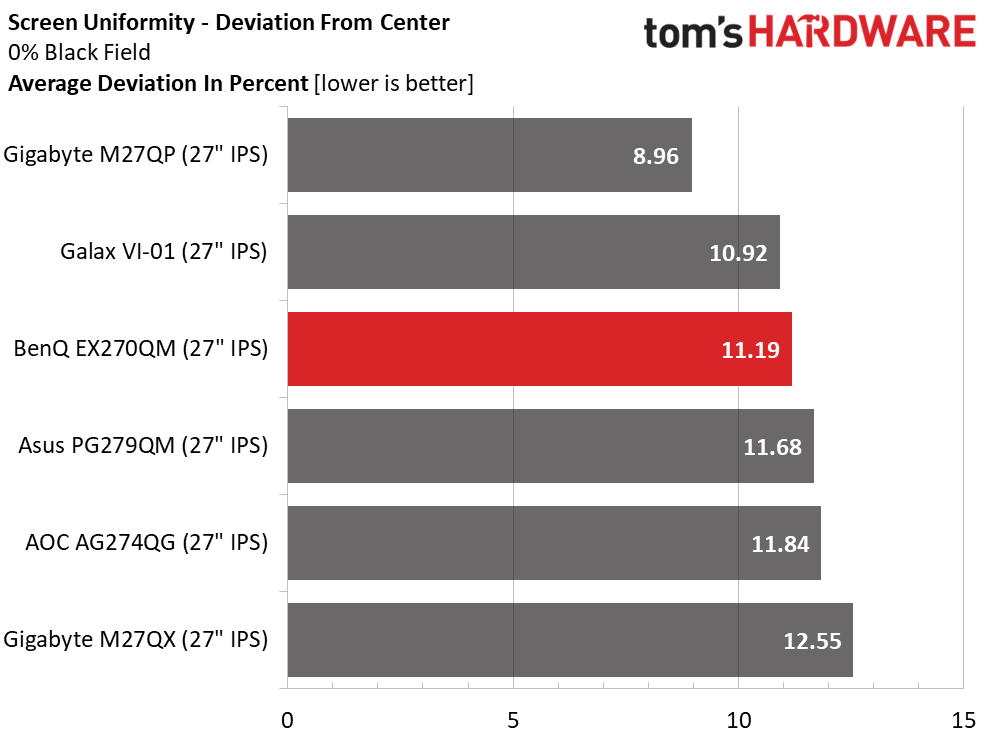Why you can trust Tom's Hardware
I had to go back a bit to find enough 240 Hz QHD monitors to compare the EX270QM. I didn’t have enough, so I included 165 and 170 Hz models too. They are Galax’s VI-01 and Gigabyte’s M27QP. The 240 Hz screens are AOC’s AG274QG, Gigabyte’s M27QX and Asus’ PG279QM. All are IPS panels.
Pixel Response and Input Lag
Click here to read up on our pixel response and input lag testing procedures.


The EX270QM is an absolute rock star in video processing. Not only does it allow blur reduction and Adaptive-Sync to be on at the same time, but the overdrive is superb with clean ghost-free motion. It also has the lowest input lag of the bunch at 22ms total. Panel response is 4ms which is on par with the rest. You can see the advantage of 240 Hz over 165 or 170. And it’s a difference that is clearly visible, provided you have a video card that can keep frame rates over 200fps.
Viewing Angles
The EX270QM is a typical IPS panel with decent off-axis image quality. At 45 degrees, there is a green color shift, but light falloff is negligible. Shadow and highlight detail remain well rendered with no visible change in gamma. The vertical plane at 45 degrees turns blue with a more washed-out appearance and a 40% light reduction.
Screen Uniformity
To learn how we measure screen uniformity, click here.
My EX270QM sample was a little hot in the lower third of the screen, with a slight glow in all-black test patterns. It was only visible with all room lights off, and it didn’t affect the actual content. There were no blobs or distracting hot spots. Color uniformity was without visible flaws, and gray test patterns were smooth-toned from edge to edge.
MORE: Best Gaming Monitors
Get Tom's Hardware's best news and in-depth reviews, straight to your inbox.
MORE: How We Test PC Monitors
MORE: How to Buy a PC Monitor: A 2022 Guide
MORE: How to Choose the Best HDR Monitor
Current page: Response, Input Lag, Viewing Angles and Uniformity
Prev Page Features and Specifications Next Page Brightness and Contrast
Christian Eberle is a Contributing Editor for Tom's Hardware US. He's a veteran reviewer of A/V equipment, specializing in monitors. Christian began his obsession with tech when he built his first PC in 1991, a 286 running DOS 3.0 at a blazing 12MHz. In 2006, he undertook training from the Imaging Science Foundation in video calibration and testing and thus started a passion for precise imaging that persists to this day. He is also a professional musician with a degree from the New England Conservatory as a classical bassoonist which he used to good effect as a performer with the West Point Army Band from 1987 to 2013. He enjoys watching movies and listening to high-end audio in his custom-built home theater and can be seen riding trails near his home on a race-ready ICE VTX recumbent trike. Christian enjoys the endless summer in Florida where he lives with his wife and Chihuahua and plays with orchestras around the state.

